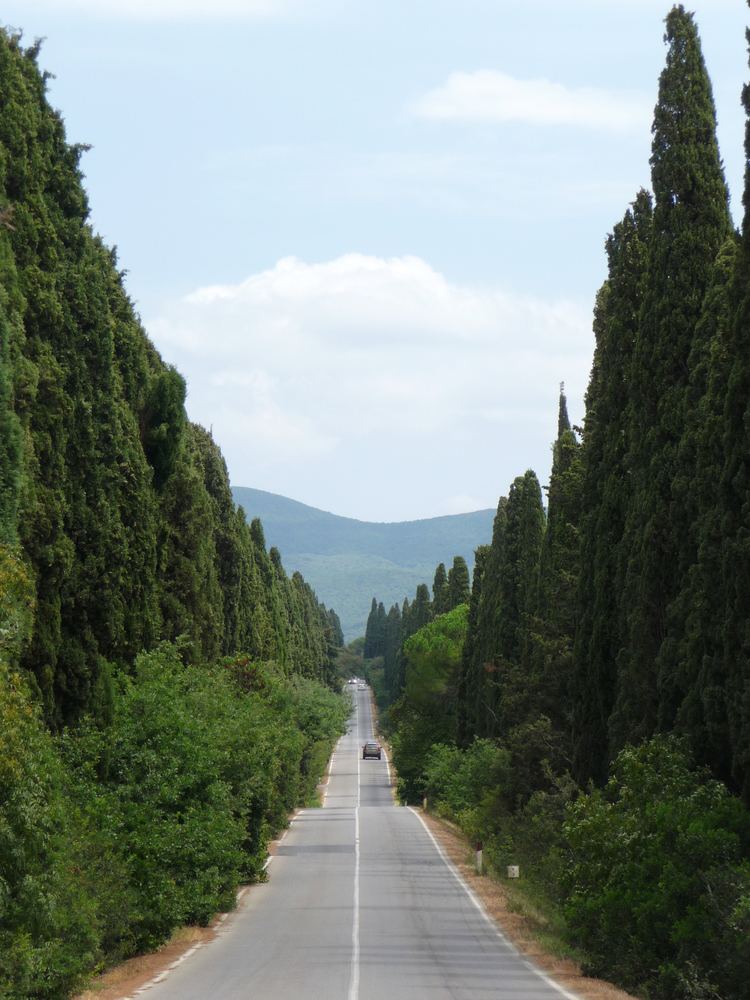 | ||
Bolgheri is located in the comune of Castagneto Carducci, a few kilometers north-west of the chief town and lies in the Province of Livorno in Italy, on the foothills of the Colline Metallifere, south of Bibbona.
Contents
Map of 57022 Bolgheri, Province of Livorno, Italy
Wine
Bolgheri became an internationally known region following an event in 1974 arranged by Decanter where a 6-year-old Sassicaia won over an assortment of Bordeaux wines. Prior to this, Bolgheri had been relatively anonymous producers of ordinary white wines and rosés.
Due to the particular characteristics of the soil and micro climate sunny, dry and moderately windy, the grape varieties of Bordeaux origin tend to thrive, such as Cabernet Sauvignon, Merlot, Cabernet Franc and Petit Verdot.
Among the most known "Super Tuscan" producers are Tenuta San Guido who produce Sassicaia, Tenuta Dell'Ornellaia who produce Ornellaia, and Ca'Marcanda of Gaja, Guado al Tasso of Antinori.
Bolgheri DOC
The current set of DOC regulations for Bolgheri red wines became approved in 1994. Before the creation of this DOC, the "Super Tuscans" from the area were typically sold under the simpler designations Vino da tavola or IGT Toscana.
The appellation rules determine that in Bolgheri Rosso and Bolgheri Rosé, Sangiovese may be utilised only to a degree of 70%, and in excess of this a wine must be classified IGT. Cabernet Sauvignon from 10 to 80%, Merlot, up to 80% and other local red varieties, up to 30%. Rosso must be aged for 24 months.
For Bolgheri Bianco, Tuscan Trebbiano from 10 to 70%, Vermentino from 10 to 70%, Sauvignon blanc from 10 to 70% and other local white varieties, up to 30%.
Two varietal wines are permitted, Sauvignon blanc and Vermentino, of which there must be at least an 85% of either grape variety.
For the appellation's pink Vin Santo, Occhio di Pernice, Sangiovese may be used from 50 to 70%, Malvasia near from 50 to 70% and other local red varieties, up to 30%. It must be aged for 36 months.
The sub-zone Sassicaia has its own appellation declaration, with up to 85% of Cabernet Sauvignon and 15% Cabernet Franc. Bolgheri Sassicaia must be aged for 26 months. It is expected to be upgraded to DOCG status.
